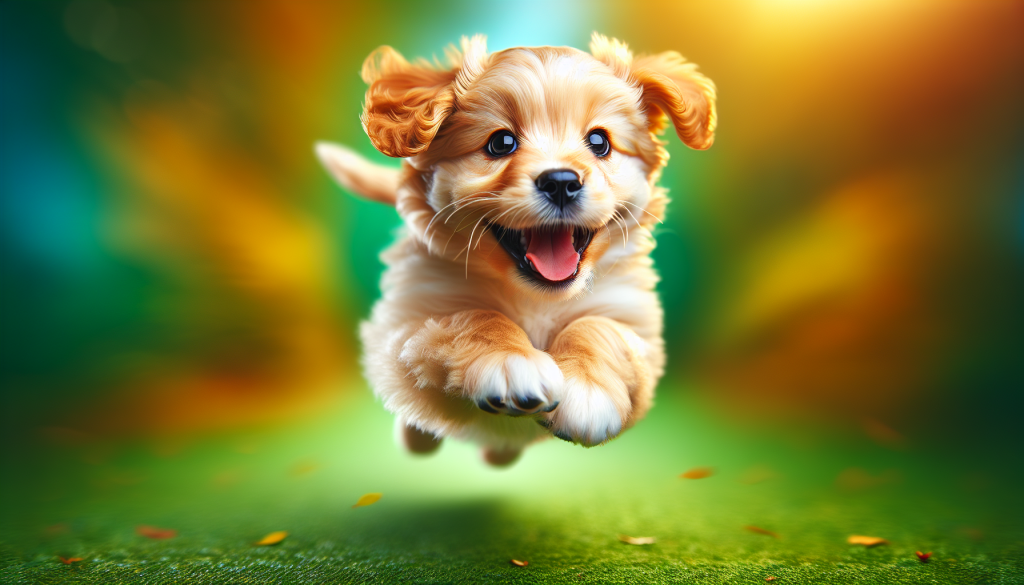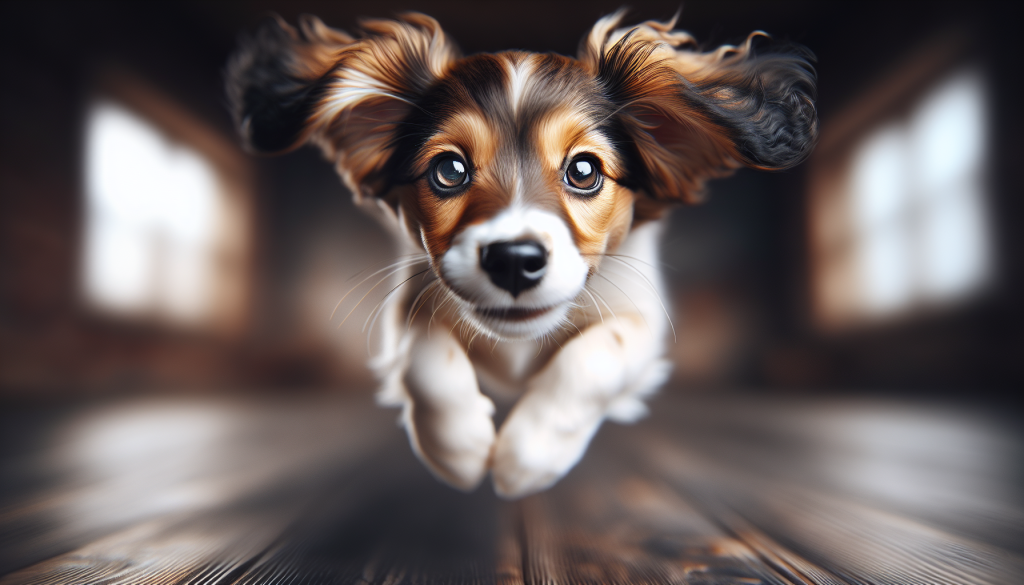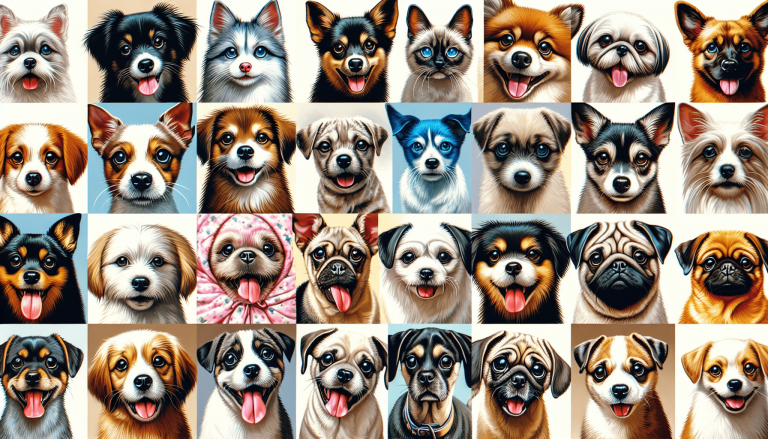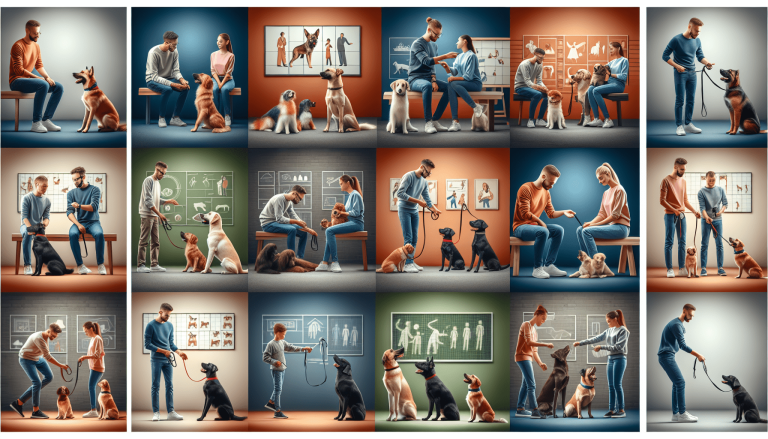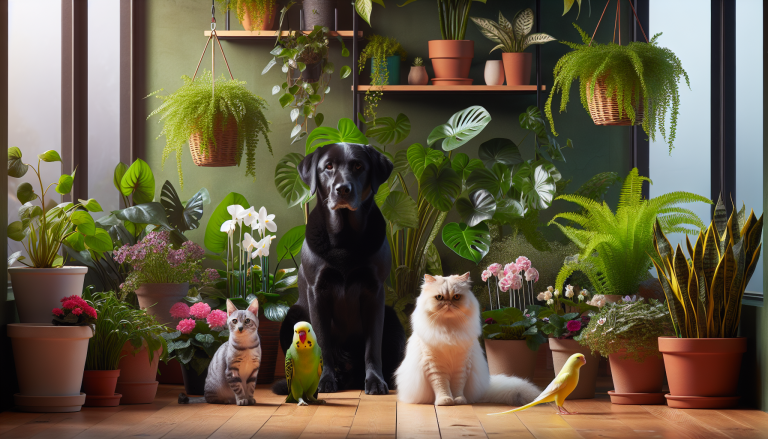Congratulations on bringing home a new member to your family – a cute and playful puppy! As you embark on this exciting journey together, it’s important to establish a solid foundation through training. In this article, we will guide you through the best ways to train your new puppy, ensuring a happy and well-behaved companion for years to come. From potty training and basic obedience to socialization and positive reinforcement techniques, we will provide you with expert tips and strategies that will make training an enjoyable experience for both you and your four-legged friend. Get ready to embark on an adventure of love, learning, and unbreakable bonds with your new puppy.
Table of Contents
Toggle1. Start with Basic Commands
Training your new puppy begins with teaching them basic commands that will establish a foundation for more advanced training in the future. These commands are essential for your puppy’s safety and your control over their behavior. Here are the three basic commands you should start with:
1.1 Sit
Teaching your puppy to sit is an important command that helps with control and obedience. Begin by holding a treat close to their nose and slowly move it upwards, causing their head to follow the treat and their bottom to lower. Once they are in a sitting position, say “sit” and give them the treat as a reward. Repeat this process several times until they can sit reliably on command.
1.2 Stay
The “stay” command is crucial for your puppy’s safety, especially in potentially dangerous situations. Start by having your puppy sit, then hold your hand out in front of them with an open palm and say “stay” while taking a step back. If they stay in place, reward them with a treat and praise. Gradually increase the distance and duration of the stay command as your puppy becomes more comfortable and confident.
1.3 Lie Down
The command “lie down” is useful for situations when you want your puppy to settle down or stay calm. Begin by having your puppy in a sitting position, then hold a treat close to their nose and slowly lower it towards the ground. As they follow the treat, say “lie down” and once they are lying down, reward them with the treat. Repeat this process until they can lie down consistently upon command.
2. Establish a Routine
Establishing a routine helps your puppy understand what to expect and provides them with a sense of security. It also helps you organize your day and ensures that all their needs are met. Here are some key aspects to consider when establishing a routine with your puppy:
2.1 Feeding Schedule
Establishing a regular feeding schedule helps regulate your puppy’s digestion and prevents them from overeating. Consult with your veterinarian to determine the appropriate amount of food and frequency of meals based on your puppy’s age, breed, and size. Stick to a consistent feeding schedule, providing meals at the same times each day.
2.2 Bathroom Breaks
Puppies have smaller bladders and need frequent bathroom breaks, especially during their early stages of training. Take your puppy outside to their designated bathroom area regularly, ideally every few hours, and also after meals, naps, and playtime. Be patient and consistent, rewarding your puppy when they eliminate in the appropriate area.
2.3 Exercise and Playtime
Puppies have lots of energy and need regular exercise and playtime to stay physically and mentally stimulated. Incorporate daily walks, interactive play sessions, and training exercises into their routine. Aim for at least 30 minutes to an hour of exercise each day, depending on your puppy’s age and breed. This will help prevent behavioral problems caused by pent-up energy.
3. Socialize Your Puppy
Socialization is crucial for your puppy’s development and their ability to adapt to different environments and interact with other dogs and people. Exposing your puppy to various experiences early on can help prevent fear or aggression issues later in life. Here’s how you can socialize your puppy effectively:
3.1 Introduce to Different People
Introduce your puppy to different people, including children, adults, and people of various ethnicities and appearances. Encourage friendly interaction, allowing the person to pet your puppy gently. Gradually expose them to different environments, such as parks, shopping centers, and public transportation, so they become comfortable and confident in various situations.
3.2 Expose to Various Environments
Expose your puppy to different environments and experiences to build their confidence and adaptability. Take them for car rides, walks in different neighborhoods, and visits to pet-friendly establishments. Introduce them to different surfaces, sounds, and sights, such as stairs, elevators, loud noises, and other animals. Always ensure your puppy feels safe and supported during these encounters.
3.3 Encourage Positive Interactions with Other Dogs
Allow your puppy to interact with other well-behaved and vaccinated dogs, both on and off-leash, in controlled environments. This helps them learn appropriate canine communication and develop good social skills. Supervise all interactions closely and intervene if necessary to ensure positive and safe experiences for your puppy.
4. Crate Training
Crate training provides a safe and comfortable space for your puppy, mimicking a den-like environment. It helps with house training, prevents destructive behavior, and can be a useful tool for managing your puppy’s behavior when necessary. Here’s how to effectively crate train your puppy:
4.1 Choose the Right Crate
Select a crate that is appropriate for your puppy’s size and breed. The crate should be spacious enough for them to stand, turn around, and lie down comfortably. If your puppy is expected to grow significantly, choose a crate with a divider panel so it can be adjusted as they grow.
4.2 Gradual Introductions
Introduce your puppy to the crate gradually, making it a positive and welcoming space. Start by placing treats, toys, and familiar bedding inside the crate to encourage them to explore on their own. Once they feel comfortable entering the crate voluntarily, begin closing the door for short periods while you are present.
4.3 Use Positive Reinforcement
Reinforce positive associations with the crate by providing treats, praise, and rewards when your puppy enters, stays, or settles down in the crate. Gradually increase the duration that they spend inside the crate, always keeping it a positive experience. Never use the crate as a form of punishment, as this can create a negative association and hinder progress.
5. Potty Training
One of the most important aspects of training your puppy is potty training. Establishing a consistent routine and using positive reinforcement techniques will help your puppy learn where and when to relieve themselves. Here’s how to successfully potty train your new puppy:
5.1 Establish a Designated Area
Choose a specific area in your yard or outside space as the designated potty area for your puppy. Take them to this spot consistently, using the same door and walkway each time. The scent of previous eliminations will help reinforce the location as their bathroom area.
5.2 Regular Bathroom Breaks
Take your puppy outside to their designated potty area frequently, especially after waking up, eating, drinking, or playing. Puppies have limited bladder control, so they need frequent opportunities to relieve themselves. Always accompany them and give them a specific command, such as “go potty,” to associate the action with the command.
5.3 Reward and Reinforce Good Behavior
When your puppy eliminates in the designated potty area, immediately praise and reward them with treats and verbal praise. Positive reinforcement helps them understand that they have done something right. Avoid scolding or punishing accidents, as this can confuse and frighten them. Clean up accidents indoors with an enzymatic cleaner to remove any lingering odors that may attract them to repeat the behavior.
6. Leash Training
Leash training is vital for your puppy’s safety and enables you to have control when you take them for walks or outings. Teaching your puppy to walk politely on a leash can take time and patience, but the effort is well worth it. Here are some steps for successful leash training:
6.1 Introduce a Comfortable Leash
Start by introducing your puppy to a lightweight, comfortable leash. Allow them to sniff and play with it, associating it with positive experiences. Gradually attach the leash to their collar or harness while they are indoors and let them walk around freely, dragging the leash behind them without any tension.
6.2 Practice in a Controlled Environment
Begin practicing walking on a leash in a quiet and controlled environment, such as your backyard or a secure area. Use treats and verbal praise to encourage your puppy to walk beside you without pulling or resisting. Keep the leash loose and maintain a positive and relaxed attitude throughout the training session.
6.3 Teach Loose Leash Walking
Teach your puppy to walk on a loose leash by using a verbal cue like “heel” or “let’s go” and gentle leash corrections when they start pulling or veering off course. Reward them when they walk beside you without pulling, using treats and praise. Gradually increase the distractions and challenges as your puppy becomes more comfortable and attentive during walks.
7. Address Problem Behaviors
During the training process, you may encounter problem behaviors that need to be addressed. Here are some common issues and how to deal with them effectively:
7.1 Biting and Nipping
Puppies explore the world with their mouths, but unacceptable biting and nipping can be problematic. Redirect their attention to appropriate chew toys or bones whenever they try to nip or bite. Teach them the “leave it” command to discourage biting inappropriate objects. Consistency and patience are key in addressing biting and nipping behavior.
7.2 Chewing on Furniture
It’s natural for puppies to chew, but when they target your furniture, it can be frustrating. Provide plenty of appropriate chew toys and rotate them regularly to keep your puppy engaged. Supervise them closely and redirect their chewing behavior to acceptable items. Using bitter sprays or deterrents on furniture can also help discourage chewing.
7.3 Jumping Up
Jumping up is a common behavior that puppies exhibit to seek attention. To discourage jumping, turn away and ignore your puppy when they jump up, depriving them of the attention they seek. Teach them the “off” command, rewarding them when they have all four paws on the ground. Ask friends and family to follow the same approach to reinforce consistent training.
8. Positive Reinforcement
Positive reinforcement is a highly effective training method that rewards and encourages desired behaviors. Here are some techniques to incorporate positive reinforcement training with your puppy:
8.1 Rewards
Use treats, such as small, soft, and high-value ones, as rewards for your puppy’s good behavior. Reward them immediately after they perform the desired action, linking the behavior with the reward. Gradually reduce the frequency of treats while maintaining verbal praise and physical affection as rewards.
8.2 Clicker Training
Clicker training involves using a small noisemaker, called a clicker, to mark the exact moment your puppy performs the desired behavior. Pair the sound of the clicker with rewards to create positive associations. Clicker training helps to precisely communicate with your puppy and reinforce good behavior effectively.
8.3 Verbal Praise
Verbal praise, such as saying “good boy” or “well done,” is an important component of positive reinforcement. Use an enthusiastic and friendly tone to express your approval and appreciation when your puppy behaves appropriately. Verbal praise can be combined with treats or used alone to reinforce desired behaviors.
9. Consistency and Patience
Consistency and patience are vital when training your new puppy. Here’s why they matter and how to incorporate them into your training routine:
9.1 Stick to the Same Training Methods
Consistency helps your puppy understand what is expected of them. Use the same commands, gestures, and techniques consistently throughout the training process. This ensures clarity and minimizes confusion, allowing your puppy to learn and respond effectively.
9.2 Provide Clear and Concise Commands
Use clear and concise commands that are easy for your puppy to understand. Keep your verbal cues simple and consistent. Combine your commands with appropriate gestures to create a visual association. Avoid using long or confusing phrases that may overwhelm or confuse your puppy.
9.3 Be Patient and Understanding
Remember that your puppy is learning and growing every day. Be patient with their progress and understanding of new commands or behaviors. Praise and reward effort and improvement, even if they haven’t mastered a skill yet. Patience and a positive attitude will create a supportive and enjoyable training experience for both you and your puppy.
10. Seek Professional Help if Needed
If you encounter difficulties or feel overwhelmed during the training process, seeking professional help can be beneficial. A professional dog trainer or behavioral specialist can provide specific guidance tailored to your puppy’s needs. Here are some options to consider:
10.1 Consult a Professional Trainer
Schedule a consultation with a professional dog trainer who specializes in puppy training. They can assess your puppy’s behavior, provide personalized advice, and guide you through the training process. A trainer can address complex behavioral issues and provide hands-on assistance.
10.2 Join a Puppy Training Class
Enrolling your puppy in a puppy training class can be a great way to socialize them while learning obedience skills. These classes often cover basic commands, socialization, and problem-solving techniques. The structured environment and guidance from a professional trainer can be highly beneficial for both you and your puppy.
10.3 Consider a Behavioral Specialist
If your puppy exhibits severe or persistent behavioral issues, considering a behavioral specialist may be necessary. These professionals are trained to assess and address complex behavioral problems that require specialized intervention. They can provide a thorough evaluation and offer behavior modification strategies.
Training your new puppy requires time, effort, and consistency, but the rewards are well worth it. By following these best practices, you can establish a strong bond with your puppy and lay the foundation for a well-behaved and happy companion. Remember to be patient, positive, and receptive to your puppy’s individual needs throughout the training journey. Happy training!

